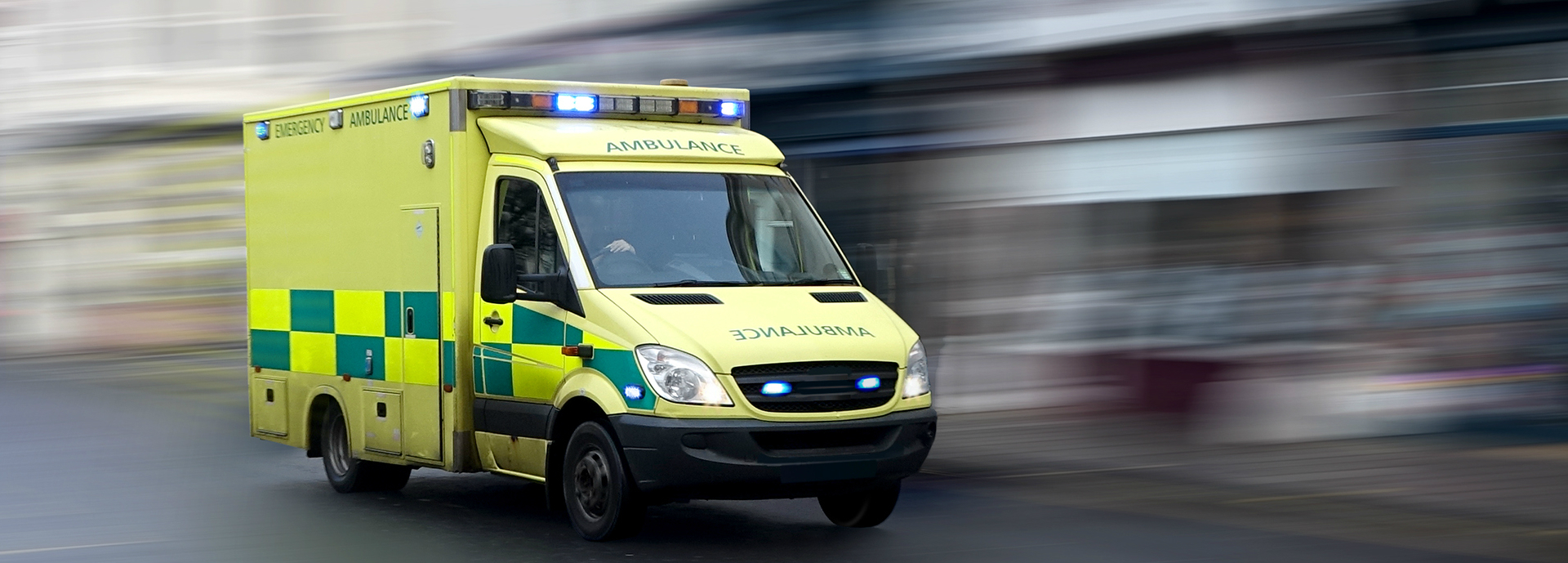The care and wellbeing of critically ill or injured patients could be enhanced by improving communication between paramedics, prehospital critical care teams and emergency departments, new research has indicated.
Two associated studies from the University of Stirling suggest that improving the accuracy and quality of patient information during handovers – through the introduction of low-tech aids and shared mental models of communication – would yield positive results.
The findings – published in the Scandinavian Journal of Trauma, Resuscitation and Emergency Medicine and BMC Emergency Medicine – have led to the Scottish Ambulance Service introducing a pre-alert and handover card to enhance communication in critical situations.
Former consultant paramedic, Dr David Fitzpatrick, now a Senior Lecturer in the Faculty of Health Sciences and Sport, led the research, which surveyed road-based ambulance clinicians, specialist prehospital clinicians and emergency department staff.
He said: “Poor communication during patient handover is recognised within international literature as one of the root causes of a significant proportion of preventable deaths. However, little was known about either prehospital or emergency department handover processes in Scotland.”

Dr David Fitzpatrick
Dr Fitzpatrick’s initial study was launched after serving paramedic Michael McKenna, also a co-author, raised concerns on the variability in prehospital handover. It investigated current handover practices, perceived challenges and the preferred handover mnemonic employed by road-based ambulance clinicians and active members of specialist prehospital teams – such as the Emergency Medical Retrieval Service, BASICS Scotland, Special Operations Teams within the Scottish Ambulance Service and search and rescue helicopter crews – in Scotland.
“Our research found that many clinicians rely on their memory or informal notes taken during patient handover. This critical process is complicated further by the fact that our study identified at least seven different mnemonics in use by clinicians during patient handover. This has the potential to lead to inconsistent information recording and delivery.
“Although current practices were described overall as being effective, the variability in mnemonic use and information provided may have led to participants reporting feeling less confident that they had received all essential information during handover.”
The most frequently reported method of recording and transferring information during handovers was via memory, with interruptions perceived as the most significant barrier. Survey participants also highlighted variability in handover mnemonic, lack of coordination between responders and lack of structured process as other potential barriers.
Significantly, almost half of all responders (48%) felt it was either ‘difficult’ or ‘very difficult’ to find time to prepare for prehospital handover.
“There were a number of elements identified within the current system that appear to impede the handover process and that require attention,” Dr Fitzpatrick said.
The study recommended the development of a shared mental model through system standardisation; innovations to support information recording and delivery; and the clear identification at incidents of a handover lead.
Intervention
The first study informed Dr Fitzpatrick’s second study, co-developed by Dr Douglas Maxwell, an emergency department consultant with NHS Greater Glasgow and Clyde, which measured the feasibility of an intervention to support clinical information recording and exchange during emergency department handovers.
“We used this information to devise a novel, low-tech, paper-based intervention in a bid to improve the data recording and information exchange processes – and ultimately seeking to ensure safe and effective patient handover.
“The emergency department setting permitted a more controlled environment to test our intervention.”
Following consultation with an expert stakeholder group, an intervention to support information recording, pre-alert and handover was co-designed by Dr Mary Steele, of the University of Southampton, and the study investigators. Paramedics were then given plastic, double-sided A6 cards, which included fields requesting vital clinical information required for pre-alert and handover. Meanwhile, the receiving emergency department was supplied with a corresponding ‘ambulance form’. The same mnemonic was used in both to support the shared mental model concept.
Both resources included fields to record patient data during pre-alert – initial information provided by paramedics via radio – and handover, filled out on arrival.
The intervention – piloted in Glasgow between February and April 2017 – was deemed to be highly acceptable to ambulance clinician participants, improving their data recording and information exchange processes. There were demonstrable improvements in the delivery of eight out of 12 clinical variables provided during the pre-alert process and perceived improvements in handover quality. However, Dr Fitzpatrick says further research is now required to further test the intervention and establish its impact on information exchange during pre-alert and handover.
Further studies
The Scottish Ambulance Service and Trauma Networks across Scotland have now adopted the pre-alert and handover card, with all ambulance clinicians to receive the resource.
Dr Fitzpatrick added: “These results suggest that the introduction of a low-tech, novel intervention is very acceptable to ambulance clinicians, intuitive to use, requires little education on use and positively supports their contemporaneous data recording and information exchange processes.
“Although our data suggests the intervention is effective in improving information sharing during pre-alert and handover, further more rigorous studies are needed into the interventions effectiveness and more generally into prehospital handover. This evidence-based approach will support prehospital clinicians deliver essential clinical information to ensure the safe and effective handover of time-critical patients.”
Collaborators on the work included physicians, clinicians and researchers from the Scottish Ambulance Service; the Nursing Midwifery and Allied Health Professions Research Unit; BASICS Scotland; Emergency Medical Retrieval Service (ScotStar); University of Surrey; NHS Tayside; NHS Lothian; NHS Greater Glasgow and Clyde; Scotland’s Charity Air Ambulance; and Bristow’s Search and Rescue.
Background information
Media enquiries to Greg Christison, Communications Officer, on 01786 466 687 or greg.christison@stir.ac.uk

